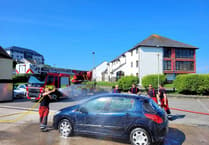One of the Royal Navy's most advanced warships has been shooting down swarms of drones during a live-firing exercise in Cardigan Bay.
Named Exercise Sharpshooter, the Cardigan Bay danger zone was used to test HMS Dauntless’ weaponry, radars and sensors before deployment to the Indo-Pacific region.
The destroyer is the first ship of her class to fend off hundreds of Banshee, Hammerhead and virtual drone attacks as part of a scenario customised to mimic real-world threats.
Residents in Aberystwyth reported hearing ‘large thudding’ noises on the promenade on Monday as the warship and her crew were put through their paces.
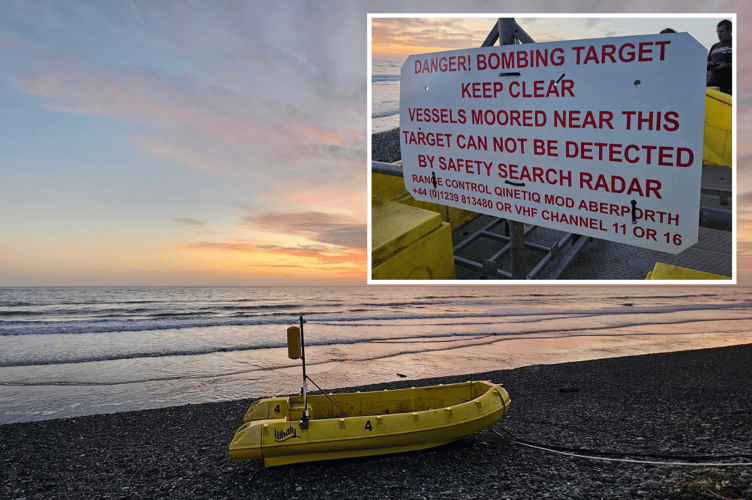
The exercise was observed first hand by Minister for the Armed Forces, Luke Pollard MP, who said: “The speed and skill shown by the crew of HMS Dauntless in defending the ship against a complex and sustained series of drone attacks was incredibly impressive.
“This test shows how the Royal Navy is adapting to face evolving threats, including from drone attacks in the Red Sea, as well as how we are working closely with industry to harness the latest technology to keep the UK secure at home and strong abroad.
“The government remains focused on delivering National Security for Britain under our Plan for Change, and this is yet another example of that.”

QinetiQ’s Banshee Whirlwind target is an aerial drone capable of flying at over 200mph, while the Hammerhead is an uncrewed surface vehicle which is used to imitate real-world threats.
Being ready at a moment’s notice, Dauntless shot down drones using her Phalanx Automated Gun, 4.5inch and 30mm Guns as well as an embarked Wildcat using Martlet missiles which are able to take out targets up to 6km away.
The training exercise, designed by instructors from the Royal Navy’s Fleet Operational Standards and Training (FOST) and QinetiQ, saw the ship targeted with persistent real life and virtual threats during the day and overnight.
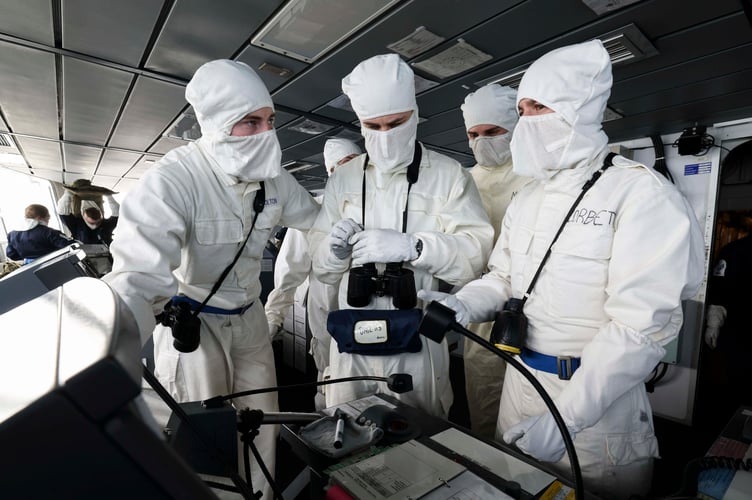
It gave Dauntless and her ship’s company an insight into what her sister ship, HMS Diamond, faced when she operated in the Red Sea last year and protected commercial shipping routes using cutting-edge technology – including the Royal Navy’s first shooting down of a ballistic missile using its Sea Viper missile.
Commanding Officer of HMS Dauntless, Commander Ben Dorrington, said: “The realism of the exercise and training delivered provided a unique opportunity for the ship’s company to demonstrate they are ready to defend, ready to fight and ready to win.
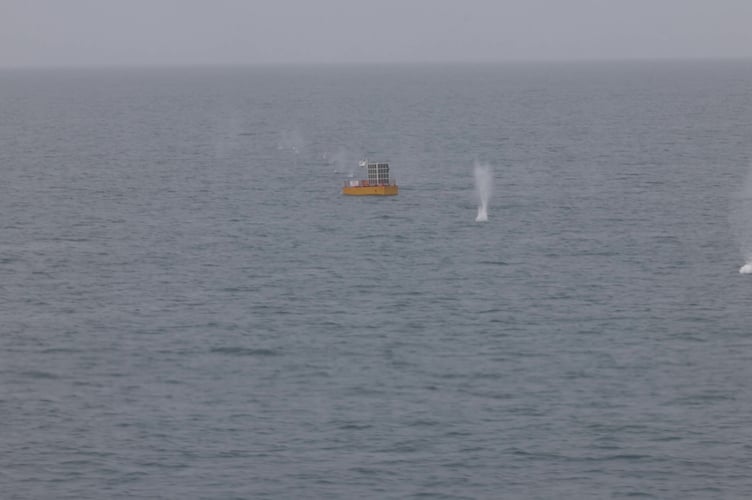
“As we reach the pinnacle of our comprehensive training package with the conclusion of Exercise Sharpshooter, we look forward to some well-deserved Easter leave before deploying as part of the Carrier Strike Group in the Spring.”
Keeping the country safe is the Government’s first priority and foundation of its Plan for Change. The work of the Royal Navy, British Army and Royal Air Force is critical to the security and stability of the UK, supporting the delivery of the Government’s five missions.
This exercise follows the Prime Minister’s historic commitment to increase defence spending to 2.5% of GDP, recognising the critical importance of military readiness in an era of heightened global uncertainty.
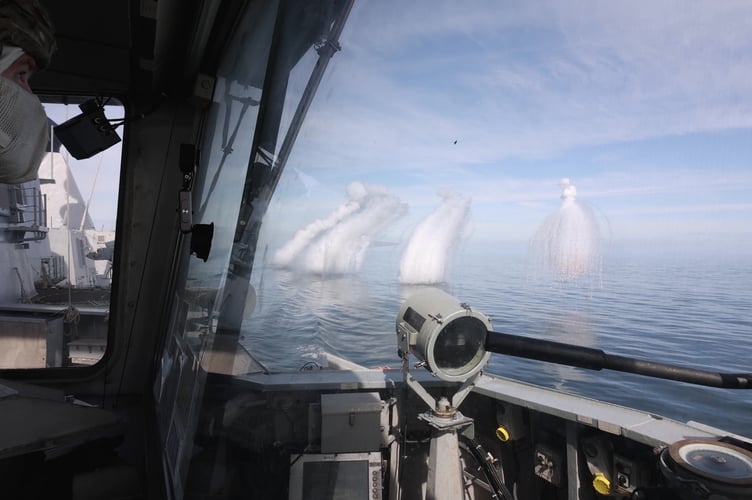
To increase the complexity of the scenario, a number of static targets were also positioned at sea to replicate different threats. These are equipped with technical equipment which gathers data and enables QinetiQ to understand the effectiveness of the weapons systems being used.
With more than 350 people involved in the exercise, the Royal Navy and industry partners QinetiQ used innovative technology to create bespoke training.
Will Blamey, Chief Executive, UK Defence, QinetiQ said: “QinetiQ is proud to deliver realistic threat scenarios that support the UK military’s operational readiness ahead of the Carrier Strike Group deployment.”
The Indo-Pacific is critical to the UK economy due to the high quantity of trade with partners and allies in the region. The multinational deployment, known as the Carrier Strike Group, will demonstrate the UK’s continued commitment to stability and security in the region.
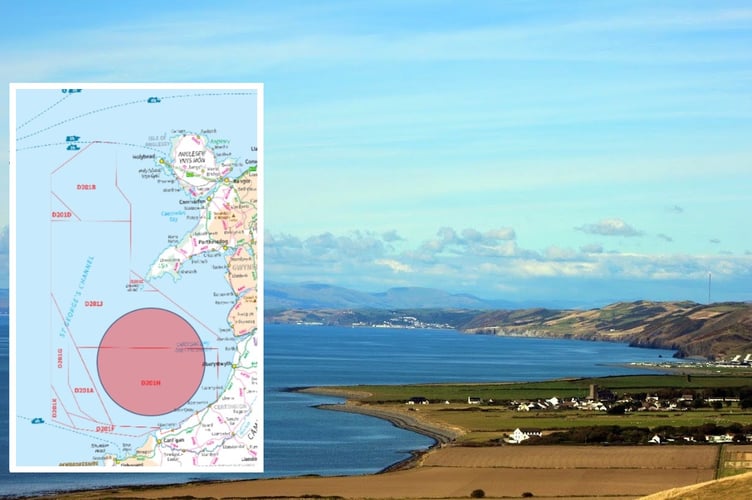
The danger area in Cardigan Bay was established during the Second World War and covers 6,500 square kilometres of the bay from sea level to unlimited height.
One of the target vessels from the operation washed up on Tywyn beach over the weekend.
The coastguard warned people not to tamper with the vessel, which also carried a warning from Qinetiq, Aberporth.
It said: “Danger! Bombing target. Keep clear. Vessels moored near this target can not be detected by safety search radar.”
The range was active between Monday and Wednesday, with Qinetiq saying: “If you are planning a trip into Cardigan Bay, it is recommended for your safety to consult the programme notice and contact Range Control on 01239 813480 or 01239 813760 or VHF Channel 11 or 16 for further advice.
"Remember for your own safety, and that of others, if you are planning to navigate through the Danger Area at any time, please familiarise yourself with the safety information which can be found on our website, before entering the Danger Area.
"Any person who finds any metal object, such as projectile, shell or any unidentified explosive object or part of such object should immediately contact the Coastguard VHF Ch.16. For your own safety, do not touch or attempt to remove such objects.”



